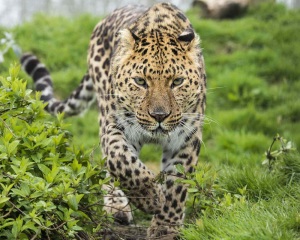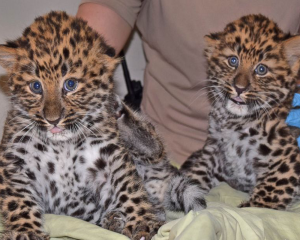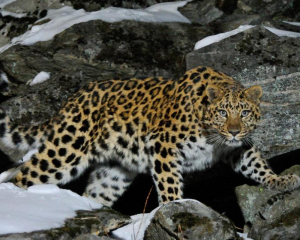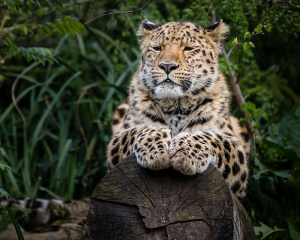
The Amur leopard (Panthera pardus orientalis) is a subspecies of leopard native to the Russian Far East and northeastern China. It is one of the rarest and most endangered big cats in the world. Here are some detailed characteristics and information about the Amur leopard:

Physical Characteristics
Size: The Amur leopard is a medium-sized big cat. Males typically weigh between 32 to 48 kilograms (70 to 106 pounds) and females between 25 to 42 kilograms (55 to 93 pounds). They are about 107 to 136 centimeters (42 to 54 inches) in body length, with a tail that adds another 81 to 89 centimeters (32 to 35 inches).
Appearance: Amur leopards have a thick, pale cream-colored coat with large, widely spaced rosettes and spots. Their fur is longer and paler in the winter, growing up to 7 centimeters (2.8 inches) to protect them from the cold. This adaptation to cold climates distinguishes them from other leopard subspecies.
Distinctive Features: They have long legs relative to their body size, which helps them move through deep snow. Their tail is long and used for balance and wrapping around their body to keep warm during freezing temperatures.

Behavior
Habitat: The Amur leopard is found in temperate forests of the Russian Far East, specifically in the Primorye region, and parts of northeastern China. These forests are characterized by cold, snowy winters and hot summers, requiring the leopard to adapt to a wide range of temperatures.
Diet: Amur leopards are carnivorous and have a diet that includes roe deer, sika deer, hares, and small wild boar. They are solitary hunters and have large territories that they patrol to find food. Amur leopards often cache their prey in trees or cover it with leaves and snow to protect it from scavengers.
Social Structure: They are solitary animals, except during mating or when females are raising their cubs. They mark their territory with scent marks and scratch marks on trees to communicate with other leopards.

Conservation Status
Population: The Amur leopard is critically endangered, with fewer than 100 individuals estimated to remain in the wild. Most of this population resides in Russia’s Land of the Leopard National Park, established specifically to protect them, with a smaller population in China.
Threats: The main threats to the Amur leopard include habitat loss due to logging, farming, and infrastructure development; poaching for their beautiful fur and bones; and depletion of their prey base. Additionally, inbreeding due to the small population size poses a genetic threat, leading to reduced fertility and other health issues.
Conservation Efforts: Conservation efforts for the Amur leopard focus on protecting their habitat, increasing anti-poaching patrols, and monitoring the population through camera traps and field surveys. The Russian government and various international conservation organizations have established protected areas and corridors to connect fragmented habitats. Breeding programs in captivity also aim to maintain genetic diversity and possibly reintroduce individuals into the wild.

Importance
The Amur leopard is a top predator in its ecosystem, playing a crucial role in maintaining the balance of prey populations and the overall health of the forest environment. The conservation of the Amur leopard is vital not only for the species itself but also for preserving the unique biodiversity of the temperate forests of the Russian Far East and northeastern China. Protecting this apex predator also helps safeguard the wider ecosystem it inhabits, which is home to many other species, including the Amur tiger.



